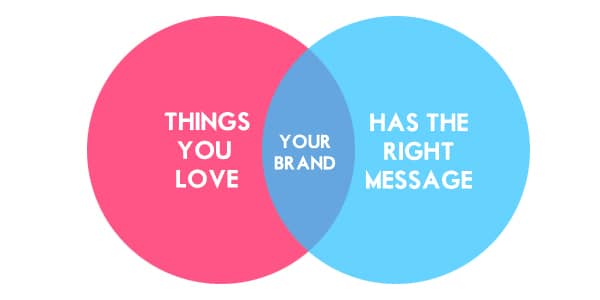Quick ways to create awareness for your brand

Owning a brand that is easily recognisable isn’t easy, at all. We can testify to that. That doesn’t mean making a strong brand is impossible though, with a few steps in the right direction, you could be on your way to brand heaven. Make good use of social media Hey, most social media tools are free you know. You might as well use them to your full advantage. Social media levels the playing field and also gives you a great opportunity to promote your business while increasing brand awareness. With the right approach you could be reaching millions of people across the world and turning some of them into clients. In Nigeria alone, 16 million people visit Facebook each month, you shouldn’t need more convincing when it comes to social media. Motherland Mogul tip: Start with a Facebook page for your business then a Twitter profile. Build them up by following conversations around industry-related topics and engaging with others. Offer prospective customers useful information that addresses their problems even if you don’t mention your brand. Remember that whatever social media channel you’re using, your message should be consistent and same tone. Press releases Sending press releases to newspapers and magazines are another way to raise brand awareness. Write compelling press releases that are up to journalistic and public relations standards. Your press releases can announce information relating to your business and/or products, or even just general events. Can’t think of any newspapers to send your releases to? Simple, upload them to your blog or website. If you can find other websites to carry your releases. Remember that interesting stories will generate publicity. Motherland Mogul tip: Consider other forms of advertising that may be unique to your country. For example, despite the huge numbers, most African still aren’t online. They are mobile though. Consider making use of SMS services to get your brand out there. Make use of established customers Coming up with campaigns targeted at gaining new leads is great, but while you’re looking for new customers you shouldn’t forget the ones that you have already. Brand awareness campaigns are a great way to keep your brand in customers’ minds and nurturing the relationships you have built already. If your customers constantly remember you, your business will remain relevant to them. Motherland Mogul tip: Need a campaign idea? Why not show your audience your business’s human side? Let your customers know your story. Show them who the person behind their beloved brand is. You can do this through your website or your blog through an “about us” page or personal updates that are relevant to your business. Stand out There are probably a thousand people offering the same kind of product or services you do. This is why you’ll need to stand out, what makes your brand different from others? Don’t ever be afraid to push the limits when defining your identity and looking for what makes you stand out. Consider alternative ways to uncovering the unique nature of your brand. Motherland Mogul tip: You can use customer testimonials to stand out from your competition. Here’s how. Ask yourself, what are your customer’s saying about your brand? Talk to them and use this to uncover your brand’s uniqueness. Videos are a great way to capture this, imagine your customers sharing what they enjoy about your products/services. You can also use this to build up your brand’s YouTube channel, go you! Make use of influencers Offering your most influential clients sweet deals is another way to create brand awareness. You can get customers to recommend friends and family, all through incentives. This is especially useful when these customers are very influential people. If you don’t have influencers in your networks, reach out to some. Influential people can be bloggers or other business owners in your industry. Motherland Mogul tip: You may have to consider offering freebies to your identified influencers. Yeah you’re dashing them things, but consider that well-connected people will very likely talk about your services to their followers. It’s a win-win. Partnerships When you’ve gone through the list of things you can do by yourself and are still lacking, it’s time to partner up. You can consider partnering with other brands to get your name in front of a new audience. With a partnership you’re tapping into your partner’s image and reputation, so you’ll have to be careful who you approach. Motherland Mogul tip: Another way to partner using social media is through guest blogging. This can create awareness for your brand when it is done with people who are popular in your industry. With brand awareness there is no shame in being everywhere in your niche. Just try not to get burned out.
4 things you can learn about branding from Yemi Alade

Yemi Alade does not need any introduction. Raise your hand if you start singing the words to “Johnny” anytime you meet someone called John. For some of us, it is difficult to remember how Yemi Alade was before the Johnny era. The mere mention of her name conjures up a certain image. That is her brand. Since rebranding herself, Yemi Alade has reached new heights of stardom with fans across Africa and beyond. She has a lot to teach us about branding. 1. Find a style that is yours… A successful brand is a brand that is unique. When you’re building your brand, first things first is discovering what you are doing that others in your industry aren’t. What makes you special and different from everyone else? You may need to add some colour and give your brand a personality that everyone will remember. Yemi Alade’s edgy sense of fashion just stands out. She has emerged with unique and quirky styles that immediately jump at you. Yemi Alade has described herself as a fashion chameleon, her style is at once easy, simple and edgy. When it comes to fashion, no one else in the Nigerian entertainment industry is doing what Yemi Alade and so effortlessly too. 2…then stick to it Let’s talk about hair. When you think of Yemi Alade what hairstyle is she rocking? The “pineapple” hair-do has become Yemi Alade’s signature. She has worn it in different colours and added little variations to it along the way. Others might consider sticking to one hairstyle boring yet, a branding essential is consistency. You have to be consistent in what you do and/or offer. Consistency reinforces the value of your brand. Yemi Alade has been consistent with her pineapple hairstyle and it links back to her style as being part of her overall brand. 3. Show off your best work When building a successful brand ladies, you’ll have to pay attention to positioning. Once you have put a message out there you must avoid changing it easily. Otherwise you risk confusing your customers. Pay a visit to Yemi Alade’s Twitter page and right there you will see #Johnny. This is a very important branding strategy. “Johnny” is Yemi Alade’s most successful hit yet and by putting it on her page, she is ensuring that anyone who is a fan of the song will associate it with her. In this way, “Johnny” is now part of her brand, more so than other songs she has released. Using your best work is a great strategy for branding. 4. Don’t be afraid to venture into unknown territory In finding out what makes your brand unique, you may need to push yourself. Think outside the box, be innovative and bold, be daring and most importantly make sure you are standing for something you believe in. For me, one more things comes to mind when I think of Yemi Alade; multilingual. She sang a French remix of “Johnny” and brought on a popular French zouk artist for a remix of “Kissing”. Going further she released a Swahili version of “Na Gode”. Yemi Alade has taken her brand to entirely new levels by speaking to audiences in their own languages. Her brand communicates with fans across borders, something that the only most successful brands accomplish. What else do you think aspiring #MotherlandMoguls can learn from Yemi Alade? Kindly let us know in the comments section below.
How to build an online media company on a start-up budget

Before launching Ayiba Magazine, I searched online for existing African-authored content sites targeted at young Africans and was scant to find any doing what I had in mind. I launched Ayiba with the goal of providing a platform that showcased African change makers around the world who were disrupting tired narratives through media, technology, and innovation. I didn’t just want to start a blog, instead I wanted to build a network of writers that covered content from across Africa and the Diaspora in a way that connected our generation. If we look at mass media outlets that cover Africa, we have the BBC, CNN, and Al Jazeera, amongst others, but none of them are African owned. I have always asked myself why there are no prominent African owned media outlets that cover content from across Africa. A long-standing argument in development has been that all the books written on Africa are authored by old white men. Well, we’ve entered a new Digital Age and the same thing remains true about a large percentage of the content found online. Of course that is increasingly changing, but it’s due to sites like Ayiba, channels like Arise TV, and others in the new media ecosystem. I believe Ayiba is important for the media landscape because our readers are our writers. We create content to inspire young Africans that is written by young Africans. What sets us apart is this authenticity and the fact that we constantly strive to cover content from all over Africa – not just the usual suspects of Nigeria, Kenya, Ghana, and South Africa. Over the past three years, there are five key strategies that have allowed our platform steadily scale. All of them relate to content creation because as the say “content is Queen.” Or do they say King? Anyway, from day one, we have focused on generating diverse and quality content because we know that is how we will one day grow to millions of readers. A girl’s gotta dream! Our strategies are: Building a well-managed virtual office: Since our team lives across three continents and four time zones (and is often moving between locations), we have had to create virtual processes for everything we do. We’ve refined and streamlined our digital work environment using a combination of platforms, including Slack, Google, Facebook, and Dropbox. Building a diverse team: When recruiting, we don’t limit our search. All that matters is that the talent is tapped into global media and has a voice. It’s because of the diversity in our team that we manage to cover stories from all over the world and are able to land features with so many diverse subjects. Training new talent: We can’t always expect to find the best ready-made talent. Sometimes we have to nurture the talent we seek. Our editorial team is committed to working with our contributors to produce quality content that meets the standards Ayiba has set for itself and that our readers have come to expect. Creating content partnerships: A major aspect of the Digital Age is the sharing and redistribution of information. Ayiba contributes to this by republishing and cross-publishing content, as well as cultivating distribution channels for our content. We would like to see more collaboration in the African new media ecosystem. Designing an aesthetically pleasing site: Your content can be ace, but if your site looks amateur, readers will be less likely to stick around. WordPress themes are inexpensive and can easily be customized to meet your needs. I highly recommend them. Of the points listed, talent acquisition has certainly been the most challenging hurdle. However, since we recruit talent from both the Diaspora and the continent, this increases our talent pool. In the Diaspora, we reach out to our founding team alumni networks at Mount Holyoke College and Yale University. In Africa, we use Opportunity Desk to post our internship and fellowship programs. The internship program is for all roles outside editorial and runs for three months at a time, while our editorial fellowship is for up to six months. Ayiba emphasizes training homegrown journalistic talent. Our environment is fast-paced, yet focuses on quality of content rather than quantity. Our editors work directly with our interns and fellows to improve their craft, providing a partnership from which both parties benefit. Some fellows choose to stay on after their fellowship, which has been great, but most leave to pursue other great opportunities. However, all benefit from an experience that has improved their writing ability. One tip I can give on recruiting in a start-up is to make sure that whoever you bring into your team buys your weakness and sells you their strength. This means the team needs to be balanced by whoever you decide to bring on board. Each individual should neutralize the weaknesses of the team as a whole with their strengths. That’s the best way of keeping a lean team that delivers. We recently published our first print issue, which was well-received. In fact, it was invited to exhibit at the first African Art Book Fair at the Dak’Art Biennale in Senegal. It was a challenging and time consuming process, but the whole team learned a lot. The best part is that we were able to create and distribute our print issue to five continents with less than $100 spent on the project. We did this by: Recruiting talented design students who were looking to expand their portfolios to include magazine spreads. Using a pay-per-issue print service like Blurb, so we didn’t have to order in volume or handle delivery. Using creative commons like Flickr for stunning high quality non-copyrighted images. If you are unable to recruit designers, I would advise purchasing template bundles from sites like Creative Market or Themeforest and modifying them to suit your aesthetic. Adobe InDesign is quite easy to learn and YouTube is a great resource. In under two months, my team with little experience in print publishing, pulled together a beautifully designed 60-page print issue
Kalinè: You don’t need the ideal situation before you do something with your talent

Singer, pianist, composer and producer – Kalinè is an artist of many talents. The Berklee College of Music graduate inspires her fans through her genuine and unique lyrical style while navigating the Nigerian musical industry as an independent artist. After getting her start in the industry ten years ago, she has remained a self-managed artist who believes that the beauty of not being on a label or represented has given her the power to make decisions about her musical career—what she wants to do and how she wants to do it—all of which have molded her as the artist that she is today. She Leads Africa spoke with Kalinè about her journey as an artist and entrepreneur and why honesty is her favorite form of inspiration. You published a piece on your blog Self-Managed- 9 Reasons why you should be your biggest cheerleader. Why did you decide to self-manage as opposed to hiring someone to do it for you? The ideal situation would be to have a support system in a formal way, or to have a team. However, I got to a point where I was looking for people, as opposed to being found. It is a lot better to be found by a manager as opposed to looking for one or paying for one. This is because they are coming on board knowing exactly what you want to do and they have a passion for what you are doing. I’ve learned to be discerning about who I want on my team as well. I have come into my own, and embraced the challenge that a self managed artist has and I try to use that to encourage others by saying, you don’t have to have the ideal situation before you do something with your career or talent. That is how the self-mantra was formed; by embracing it and seeing the beauty in it—until the right person approaches me. We all know that building a brand is filled with everyday challenges, some big and some small and aggravating. What’s your favorite challenge that you have tackled and what did you learn from this experience? Patience is the biggest thing for me. In this industry it used to be so difficult for me to see other people making a success of their talents and passions. I’ve learned that patience is the most important thing. Everyone has their own journey, their own timelines and trajectories. There is no use being anxious or worried about what is going to happen. I strongly believe that I will get to where I want to go. I must be patient about with the recourses I do have. Since you self-manage, this must also mean that you manage your own social media sites? If so, how have you built an online community around your brand? What advice would you give to other entrepreneurs around building passionate fans and active online communities? Be true to yourself. Be authentic and genuine, whether on Instagram or Facebook or Twitter or Soundcloud. I try to give valuable advice or useful and relevant information to my followers and supporters, while constantly remembering to be myself as I do so. It is also good to have goals for each platform. Your Instagram followers are very different from your Facebook followers, likewise your LinkedIn followers. Figure out, what exactly do followers want to gain from the different platforms? It is a learning process, and a trial and error. From your social media pages, I can see that you’re inspiring your followers in everything that you do—whether it’s singing or blogging. How do other activities that you partake in, inspire your work? Photography, reading, social messages, conversations, and social issues inspire my blogging and songwriting. At Berklee School of Music I studied film and music scoring. I’ve written music for commercials, and teach piano to little kids. Being an artist is a full time job. Everyday there is something to do—from social media, to practicing for a show, to styling, and to rehearsing. What female artists do you gain inspiration and or empowerment from? Adele, her honesty inspires me. Lianne Lahava, Laura Mvula—to name a few—teach me to stay true to myself and to write from an honest place. How do you define yourself and your music, in terms of today’s climate? If you come to one of my shows, you will hear reggae, highlife, pop, R&B and classical elements. The common thread that runs through all of my songs are honesty and elements of truth and authenticity through my repertoire. I am influenced by too many things to really put myself in the box. I think that is where the world is headed—no longer really saying. Everyone is going into various genres; as the Internet and social media become more accessible around the world, we are all going to make music that we love and we know we will communicate to our followers and our fans. What tips do you have on negotiating how much you get paid, how do you determine doing a free show or not? It all depends on the type of gig, and how many minutes they want you to perform; how many songs they want and the number of instruments needed. All are determining factors and more—styling, makeup, and hair—help me to determine how much to charge. However, creativity is relative. Some people have a budget. When you get to a point where you are trying to negotiate then other things come in, such as whether it is for a good cause or if it will be really good exposure for you or performing in front of an audience that you do not get to perform in front to often; or even someone saying, I will cover your costs but not pay your labor fees. There’s also the situation where you have the opportunity to leverage off the people who ask you to perform—if they can open some doors for you, or introduce you to certain people and not pay
Come what may…business must go on

To all intents and purposes, many economies on the continent have seen a slowdown. Businesses are being tested for resilience, they are being pushed to the edge, and the strength and acumen of their value chains are being tested. But come what may, businesses must go on. They may not thrive as they when the economy was buoyant, but they must continue in earnest. As I think about these times, two things come to mind. The need to build a strong brand to have a sustainable and viable business in and out of a slowdown. The need to continually prepare and plan to scale your business around the core business activity at the earliest possible opportunity. Building a brand. Building a business What is the difference between a brand and a business? A business is an enterprise that creates an opportunity to trade and generate revenue. A brand is made up of intrinsic values, quality and characteristics that endear clients and aspirational clients to the business. I always say when starting a business, it is crucial to focus on building the brand first, so that you can have a viable, sustainable business in the medium to long term. And building a brand is not child’s play. A business brand is almost always made up of the personal and business values of the CEO. Especially for a small business, it is almost impossible to separate the personal brand of the CEO from the business brand. These become indistinguishable given that the CEO is the face of the business, and most likely the primary client-facing representative of the business. For the business owner and CEO, this brings home the need to reflect on, define and articulate your personal and business values right from the outset. This delivers you your business brand. Understand and define what you are trying to achieve with your business and what values are aligned with that personal and business aspirations. Then, commit to live those values – through how you operate your business, how you choose and interact with clients, the quality of your services and products, how you recruit and engage with staff, how you present yourself to the world – presentation skills, public speaking skills, networking, and personal style. When we focus on these from the outset, we endear clients, and essentially revenues, to our business, create brand loyalty, and, come what may, in and out of recession, we enjoy a level of brand loyalty. Scaling your business Most business start with one core idea, concept, initiative, but there is always an opportunity to scale and expand that business. Think of a fashion brand that starts initially producing clothes, then start to produce and sell accessories, then later on goes into interiors, and maybe even then a lifestyle venture such as a restaurant. What enables such a business to do that successfully is the power of their brand. When a brand is strong, it has a following, and clients will seek out that brand for every aspect of their daily needs. It’s an intentional decision. Many global corporations and their CEOs at one point decided to develop their personal and business values (=brand) to keep their clients and customers hooked. In the event of an economic slowdown or economic upturn, their business, through their brand strength, remains a viable and sustainable enterprise. You can do it! The price of business and entrepreneurship is uncertainty, and the prize is a vision fulfilled, success even in the midst of uncertainty. Someone recently shared with me a precise lesson in living. They said, if we knew the times and seasons, if we knew exactly what would happen to us or our business next month, next year or in 3 year, we would not need faith, we would not need to be resilient. It is often the uncertainty in business and the ambition and determination to curb that very uncertainty that fuels the drive to success. Risk taking buoyed by a strong brand can bring some comforting business stability. When we strive to become better than we are, everything around us becomes better, too – Paulo Coelho, The Alchemist
